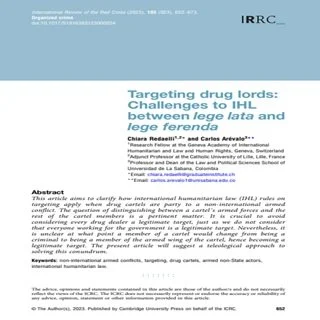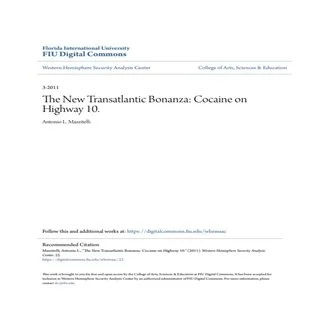By Chiara Redaelli, and Carlos Arévalo
This article aims to clarify how international humanitarian law (IHL) rules on targeting apply when drug cartels are party to a non-international armed conflict. The question of distinguishing between a cartel’s armed forces and the rest of the cartel members is a pertinent matter. It is crucial to avoid considering every drug dealer a legitimate target, just as we do not consider that everyone working for the government is a legitimate target. Nevertheless, it is unclear at what point a member of a cartel would change from being a criminal to being a member of the armed wing of the cartel, hence becoming a legitimate target. The present article will suggest a teleological approach to solving this conundrum.
International Review of the Red Cross (2023), 105 (923), 652–673.



